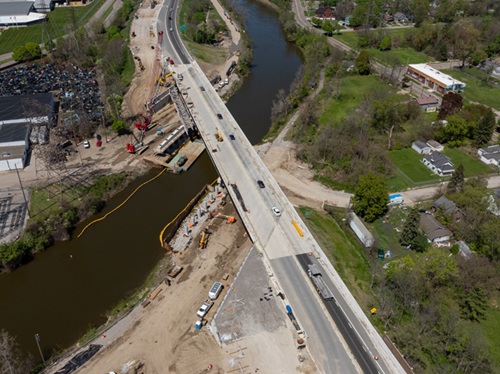The American Association of State Highway and Transportation Officials recently sent a four-page comment letter to the U.S. Department of Transportation regarding the agency’s ongoing effort to “modernize and streamline” the environmental review process for infrastructure projects.
[Above image by AASHTO]
In conjunction with USDOT Order 5610.1D, “DOT’s Procedures for Considering Environmental Impacts” issued in July, AASHTO said it considers these “initial and proactive” steps – such as removing outdated references and enhancing regulatory clarity – as a “foundation” for further legislative and regulatory improvements where the National Environmental Policy Act or NEPA is concerned.

“AASHTO and state departments of transportation have a longstanding record of successful collaboration with USDOT in implementing the NEPA process [and] remain committed to addressing key NEPA-related challenges while supporting the timely and cost-effective delivery of transportation projects,” the organization stressed in its letter.
AASHTO noted that, under the previous Council on Environmental Quality regulations, operating administrations or “OAs” – a “catch all” term for USDOT’s modal agencies – were required to evaluate the “direct, indirect, and cumulative” environmental effects of a proposed action. In some cases, that led to the consideration of impacts that extended well beyond the scope of the project itself, AASHTO said.
Now, the new NEPA interim final rule or IFR – published by USDOT in July – replaces that requirement with “reasonably foreseeable” rule of thumb versus the more detail-heavy “direct, indirect, and cumulative” requirement, as outlined in the revised in Section 106 of the IFR.
“While AASHTO acknowledges this update is essential, we recommend that the OAs ensure a consistent interpretation and application of ‘reasonably foreseeable’ across all aspects of NEPA implementation – including this IFR, guidance documents, office orders, and related materials,” the group said. “Additionally, we urge the OAs to coordinate with both USDOT and non-USDOT NEPA-implementing agencies to promote uniformity in how this term is understood and applied across sectors.”

Another NEPA refinement is the introduction of a definition of “major federal action,” which, together with USDOT Order 5610.1D, offers greater clarity and applies a narrower scope to project applicability than previous interpretations.
“This refinement is a positive step toward reducing unnecessary regulatory burdens and focusing environmental reviews on actions with significant federal involvement,” AASHTO said. “However, as with prior terminology, AASHTO strongly recommends that the OAs adopt a clear and consistent approach to interpreting and applying this definition. Consistency should be maintained … to help avoid confusion, promote efficiency, and support timely project delivery.”
AASHTO stressed that its support for USDOT’s NEPA revisions stems from the need to provide state DOTs with greater flexibility to tailor environmental reviews to the specific context of their projects while maintaining consistency with federal standards. “That can lead to better outcomes for both infrastructure delivery and environmental stewardship,” the organization noted.
“The NEPA process requires compliance with numerous other federal environmental laws, each governed by distinct regulations and administered by different agencies,” AASHTO added. “Many of these laws are subject to complex and prescriptive regulatory frameworks that limit agencies’ flexibility to explore innovative, outcome-driven approaches. This rigidity often prevents the adoption of practices that could simultaneously accelerate project delivery and enhance environmental protections.”
 Top Stories
Top Stories
Modal Administrators Speak at AASHTO Annual Meeting
December 5, 2025 Top Stories
Top Stories

